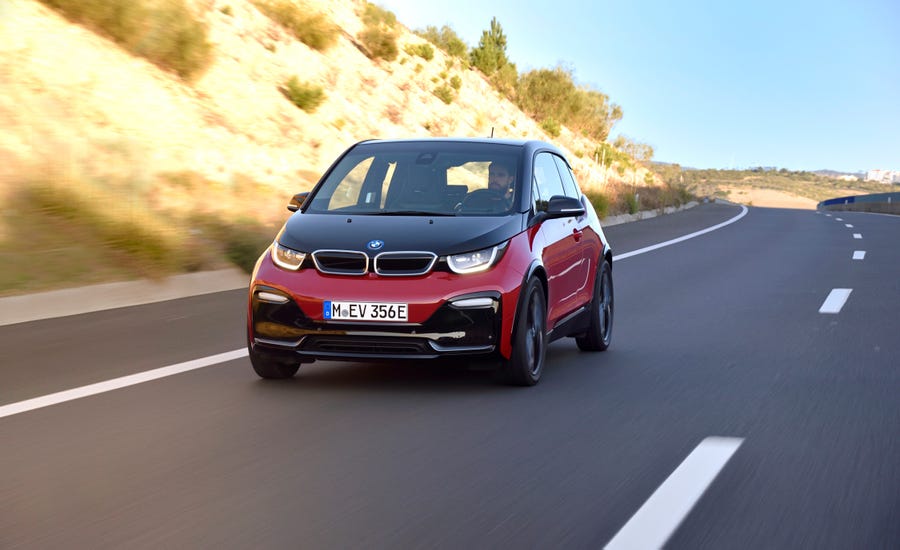
As delightfully unique and unique because the i3 is, buyers have mainly resisted its pulse-slowing charms. In the United Claims, BMW carries only a hundred or so samples of the i3 every month, a genuine discussion that few vehicle buyers are seeking four-wheeled Zen. So four decades in to the i3's living, BMW is retrofitting some sportiness into—and an s banner onto—its electrical vehicle with the 2018 BMW i3s. This new design, collection to land in dealerships alongside a facelifted i3 that month, promises faster velocity and livelier handling.
2018 BMW i3s Interior
Acceleration improves because of an additional 14 horsepower and 15 lb-ft of torque versus the conventional i3. Simple off-the-line thrust is allowed with a 199-lb-ft torque plateau sustained from zero to 4500 rpm. BMW statements that fattening the ability and torque shapes throughout the rev range provides significant changes in velocity times. We assume zero-to-60-mph instances to decline from 6.6 to 6.3 seconds for the battery-electric version. A fresh Sport operating method is unique to the 2018 BMW i3s model. Considering that the dampers are inactive models, Sport method doesn't have influence on drive quality, but it does make the steering slightly weightier. More noticeable is how it remaps the accelerator pedal's tip-in to be unnaturally peppy.For a $3850 advanced, the i3s can also be fitted with the two-cylinder gas range traction that enables the BMW to help keep going after the battery is depleted. That vehicle must hit 60 mph in 6.9 seconds. The more moving resistance of the larger tires likely will ding effectiveness and range for both models. While BMW hasn't unveiled the official numbers, we do not assume the EPA-rated range to improve much from the 2017 battery-electric model's 114 miles.
2018 BMW i3s Exterior
Wider tires will be the cornerstones of the 2018 BMW i3s improvements, though do not confuse that with “broad tires.” These tires are about as broad as those on the least expensive subcompact cars, calculating only 175/55R-20 in front and 195/50R-20 at a corner, creating them somewhat larger compared to typical i3's 155/70R-19 rubber at all four corners. The new tires fill in the wheel wells for a far more stable-looking position and raise the vehicle's monitor by 1.6 inches.The 2018 BMW i3s also rides on stronger rises, dampers, and anti-roll bars, with your body lowered by 0.4 inch compared with the conventional i3. The drive quality is well matched to modern highways, although the ancient stone-and-brick back alleys of Lisbon, Portugal, triggered heads to shake and bob. Corners are met with substantially flatter human body moves, but a parking-lot cone course create by BMW shown the automobile is forget about keen to show in. It's telling that the restricted gymkhana kept rates below 25 mph. The i3s's lightweight proportions lend it a low-speed nimbleness but do nothing for high-speed stability. And even if they're larger, the i3s's tires are exactly the same low-rolling-resistance Bridgestone Ecopias as those utilized on the normal i3, and their fairly minimal restricts suggest hustling the i3s is still a pulse-calming affair. The i3s remains therefore disinterested in extreme cornering that it's an easy task to overlook this can be a rear-wheel-drive vehicle with a mid-mounted engine; an electric Porsche Cayman the BMW i3 is not. As an improvement within the i3, however, the i3s appears greater situated to replace the conventional vehicle than to just complement it.